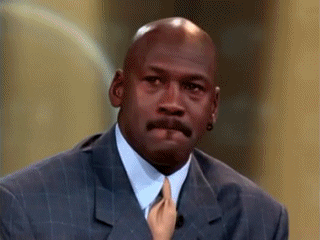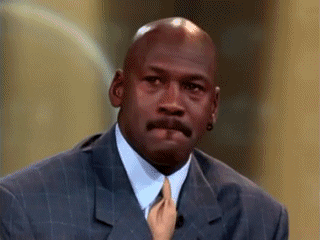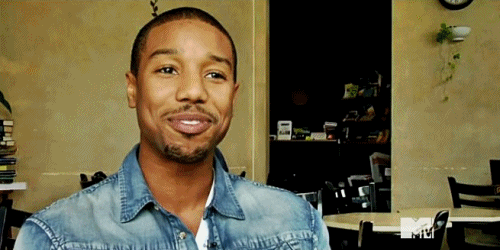Andros
Kraken
- Joined
- Jan 14, 2020
- Posts
- 3,728
- Reputation
- 6,184
Women, on average, tend to be more attracted to men who have a relatively narrow waist, a V-shaped torso, and broad shoulders. Women also tend to be more attracted to men who are taller than they are, and display a high degree of facial symmetry, as well as relatively masculine facial dimorphism.[18][19] Women, regardless of sexual orientation, tend to be less interested in a partner’s physical attractiveness than men.[41]

In Middle English literature, a beautiful man should have a long, broad and strong face.[60]
A study that used Chinese, Malay and Indian judges said that Chinese men with orthognathism where the mouth is flat and in-line with the rest of the face were judged to be the most attractive and Chinese men with a protruding mandible where the jaw projects outward were judged to be the least attractive.[61]

Double-blind studies found that women prefer the scent of men who are rated as facially attractive.[69] For example, both males and females were more attracted to the natural scent of individuals who had been rated by consensus as facially attractive.[70] Additionally, it has also been shown that women have a preference for the scent of men with more symmetrical faces, and that women's preference for the scent of more symmetrical men is strongest during the most fertile period of their menstrual cycle.[71] Within the set of normally cycling women, individual women's preference for the scent of men with high facial symmetry correlated with their probability of conception.[71] Men's body odor is also affected by their diet, with women expressing preferences for male body odor associated with increased dietary fruit and vegetable and protein content, and reduced carbohydrate content.[72]
For the Romans especially, "beardlessness" and "smooth young bodies" were considered beautiful to both men and women.[81] For Greek and Roman men, the most desirable traits of boys were their "youth" and "hairlessness". Pubescent boys were considered a socially appropriate object of male desire, while post-pubescent boys were considered to be "ἔξωροι" or "past the prime".[81] This was largely in the context of pederasty (adult male interest in adolescent boys). Today, men and women's attitudes towards male beauty has changed. For example, body hair on men may even be preferred (see below).
IT'S OVER FOR BEARDCOPERS
A 1982 study found that an abdomen that protrudes was the "least attractive" trait for men.[92]
In Middle English literature, a beautiful man should have a flat abdomen.[60]
LOW BODYFAT OR DEATH
More recent research has suggested that redder and yellower skin tones,[115] reflecting higher levels of oxygenated blood,[116] carotenoid and to a lesser extent melanin pigment, and net dietary intakes of fruit and vegetables,[117] appear healthier, and therefore more attractive.[118]
https://en.wikipedia.org/wiki/Physical_attractiveness#Male

In Middle English literature, a beautiful man should have a long, broad and strong face.[60]
A study that used Chinese, Malay and Indian judges said that Chinese men with orthognathism where the mouth is flat and in-line with the rest of the face were judged to be the most attractive and Chinese men with a protruding mandible where the jaw projects outward were judged to be the least attractive.[61]

Double-blind studies found that women prefer the scent of men who are rated as facially attractive.[69] For example, both males and females were more attracted to the natural scent of individuals who had been rated by consensus as facially attractive.[70] Additionally, it has also been shown that women have a preference for the scent of men with more symmetrical faces, and that women's preference for the scent of more symmetrical men is strongest during the most fertile period of their menstrual cycle.[71] Within the set of normally cycling women, individual women's preference for the scent of men with high facial symmetry correlated with their probability of conception.[71] Men's body odor is also affected by their diet, with women expressing preferences for male body odor associated with increased dietary fruit and vegetable and protein content, and reduced carbohydrate content.[72]
For the Romans especially, "beardlessness" and "smooth young bodies" were considered beautiful to both men and women.[81] For Greek and Roman men, the most desirable traits of boys were their "youth" and "hairlessness". Pubescent boys were considered a socially appropriate object of male desire, while post-pubescent boys were considered to be "ἔξωροι" or "past the prime".[81] This was largely in the context of pederasty (adult male interest in adolescent boys). Today, men and women's attitudes towards male beauty has changed. For example, body hair on men may even be preferred (see below).
IT'S OVER FOR BEARDCOPERS
A 1982 study found that an abdomen that protrudes was the "least attractive" trait for men.[92]
In Middle English literature, a beautiful man should have a flat abdomen.[60]
LOW BODYFAT OR DEATH
More recent research has suggested that redder and yellower skin tones,[115] reflecting higher levels of oxygenated blood,[116] carotenoid and to a lesser extent melanin pigment, and net dietary intakes of fruit and vegetables,[117] appear healthier, and therefore more attractive.[118]
https://en.wikipedia.org/wiki/Physical_attractiveness#Male




